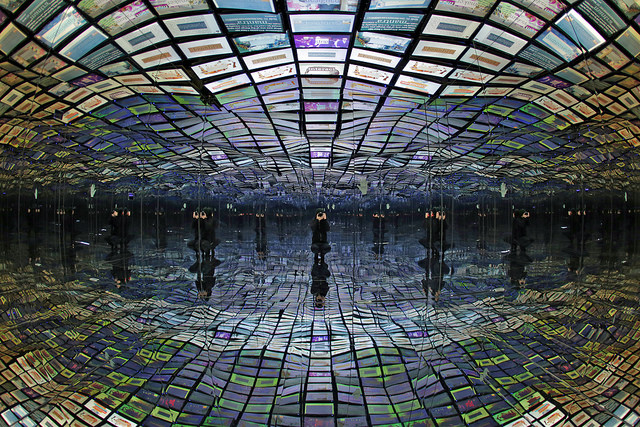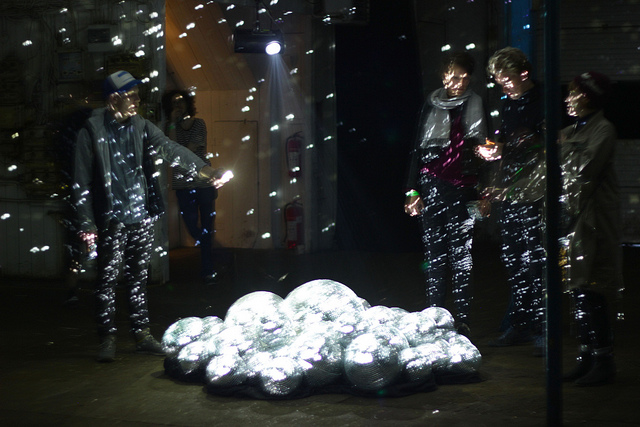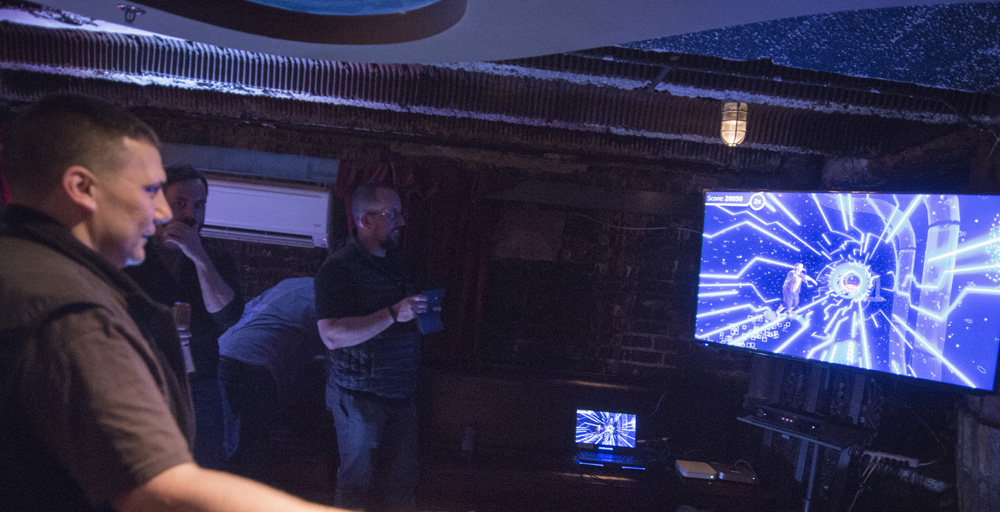
Kyle McDonald is an interactive artist who is heavily involved in the open-source movement. Works like Social Soul recreate the experience of being immersed in someone else’s social media stream. McDonald’s other works follow the same interest in overlapping individuals’ experiences. He recently spoke at the INST-INT interactive art and technology conference. Read F Newsmagazine’s INST-INT coverage here to learn more about the conference and the open-source community.
Kayla Lewis: What is your favorite takeaway from conferences like INST-INT?
Kyle McDonald: It’s always really nice to just see old friends again. I feel like I always walk away from this kind of event with a lot of excitement, inspiration and ideas for things I want to pursue next. It’s hard to get that same degree of feeling like anything is possible from other environments.
That’s true. How do you feel when you leave this environment? How do you try to keep up that motivation and that sense of inspiration?
This community has a really strong online presence, so that helps a lot. The important thing is finding people near you who want to hang out, and just making a point of getting excited about stuff and supporting each other. I think in even the smallest communities you can still have a chance to do that.
What about the people who don’t get to attend these conferences? How do you try to spread this idea of community?
I think if you come to something like Eyeo or INST-INT then you start to get a feel for people who really want to have an open process, and that spreads. Once people leave, they go back, they do more of their work, they’re going to be working in that open way and that’s going to be kind of viral. They’re going to cause other people to work in that way, too. I also think it’s important to have like a structure within open source communities that allows people to actually physically meet in person because historically, open source software has thrived off the fact that you don’t have to meet in person.
Do you think that presenting open source in the context of art is what can help fuel that need to meet in person versus through the computer?
It definitely has a big effect. Especially when you’re starting to work with things that are installations. The value of being in person is so much more obvious. If you’re working on an open source project to make something like an email client, then maybe it doesn’t feel the same.
There are all of these ideas that come with open source — mainly sharing everything. How do you think that changes the dynamics of somebody’s artwork as their own when someone can take a program you created for one of your works and use it as part of their work?
Mixing open source software and art has a huge effect on how you make art. It keeps you on your toes because you realize that once you put something out there, you’re basically racing against everyone else to make something worthwhile with it. It also keeps you honest because it means that you can’t claim to be better than anyone else because you can see that if you’re part of that community that everyone is sharing with each other that you’re all very directly standing on the shoulders of giants. There’s a different kind of ego that evolves with open source. It [also] forces you to innovate all the time because even if you do release something and make something interesting with it before the next person does, you’re going to have to only stick with it for a little bit. If you want to stay relevant, you can’t just keep using your same tricks over and over. I have some friends who are amazing painters, for example, and they don’t share each other some of the details about how they modify their brushes and how they mix their paints and some of that stuff because it’s part of what they do and they actually use that to differentiate themselves from other painters. And you don’t really have that option with open source software.
You’re either part of the movement or you aren’t.
You can kind of stand on the periphery and use it, but once you get into it, you have to constantly innovate because innovation is the only thing that sets you apart. You have to give up your ego a little bit, and you have to work pretty quickly to keep up with other people.
Do you consider the process as an important part of the work you show? How important is it that people are aware of the work that’s behind it?
Yes. For me it’s very important. The process is the main thing about the art. If I try to group my projects into one thing, the only idea that’s consistent is sharing. There’s like no other theme that’s common throughout all of them. I think sharing is a process thing. It’s not something you always see with the final experience. … I think I’ve made a lot of tools that are based off installations and vice versa. Sometimes what I’ll do is I’ll hack together some new tool or technique … and I’ll share it with people and I’ll kind of be in a race with everyone else to try and make something interesting with it and discover and explore what’s possible. Then an installation will come out of it, and other people will have installations come out of it … and for me that process of sharing that tool with people and releasing that openly that’s just as much the project itself as the installation I make with it.
To the people engaging with interactive art, a lot of the work is spectacle, or it’s playful. How do you feel about that?
I think it’s important for art to be appreciated from a lot of different perspectives. The best art is appreciated from the most perspectives. So I don’t normally get very excited about making art for one person specifically or for one small group of people. I’m most excited by the things that everyone can find something very different about that relates to them. When I see a kid walk up to something I’ve had a chance to help with and they get really freaked out and excited, and then when I see someone who’s maybe a nerdy programmer walk up and they’re like, “How does this work?” I get really excited about both those things. … So ideally, I want to make things that can be appreciated in all those different ways, and I don’t see any of those as more or less valid than the others. I think they’re just different ways of experiencing the same thing.

What would you suggest for people that are interested in working in this field? Before they’ve been successful, what are good things to keep in mind?
A couple things. If there’s something that you want to get better at, it takes a lot of practice. It’s the same for every scope. And art’s not an exception. It’s not like because it’s creative expression, you don’t have to practice. Another thing I’d say is to find someone they look up to and respect, and make sure to hang out with them and see if you can convince them to let you work with them. That makes a huge difference, and it’s probably one of the most important things, because all of the other advice will flow from that kind of relationship. [Also] find the right community that you feel nurtures your passion. And once you have a community that does that, then just follow your passion. Do the thing that you’re most excited about all the time.
Just do what you like.
Yeah, do what you like and do it really well. I think that if we had more people who were doing what they like as best as they could, we’d be in a much better situation. There are a lot of external factors as to why people choose certain work. Sometimes it’s from cultural factors that are about biases toward their upbringing or gender or economic status or any of those things, but then there’s also the big factor of fear. Fear of failure, fear of doing the wrong thing, and I think those are things that anyone can overcome. The other stuff is a lot harder, and that’s going to take a lot of cultural change for all of those things, but when it comes to fear of failure and that sort of thing, just practice and follow your passions. Find someone to support you, a community to support you, and anyone can do that.







